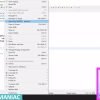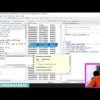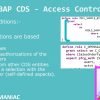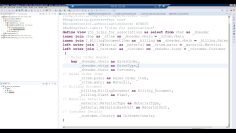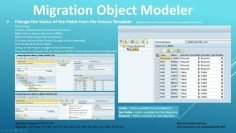This video discusses the introduction to Core Data Services (CDS) in SAP HANA and ABAP. It provides an overview of why SAP introduced CDS and the basic definitions related to it.
After watching this video, you will learn:
- The reason SAP introduced CDS: SAP HANA supports SQL to define, manipulate, and consume data from the database. However, higher technologies like OData, BOPF, Business Intelligence, EDM, etc., had to create their own data models. To address this issue, SAP introduced CDS as a common data model that can be consumed across technologies.
- The definition of Core Data Services (CDS): CDS is a set of domain-specific languages and services for defining and consuming semantically rich data models. It includes Data Definition Language (DDL), Data Query Language (DQL), and Data Control Language (DCL).
- The difference between ABAP CDS and HANA CDS: ABAP CDS is developed at the application layer side by ABAP developers and is used by ABAP applications. On the other hand, HANA CDS is developed by HANA native developers and is used by HANA specific applications.
- The difference between classical views in ABAP and CDS in ABAP: CDS allows for code pushdown, meaning complex logic can be executed at the database level. This was not possible with classical views. CDS also supports other advanced features like unions, input parameters, SQL functions, and system variables.
- The tools required to create CDS: CDS views cannot be created using SAP GUI. You need to install either Eclipse or HANA Studio to create CDS views.











